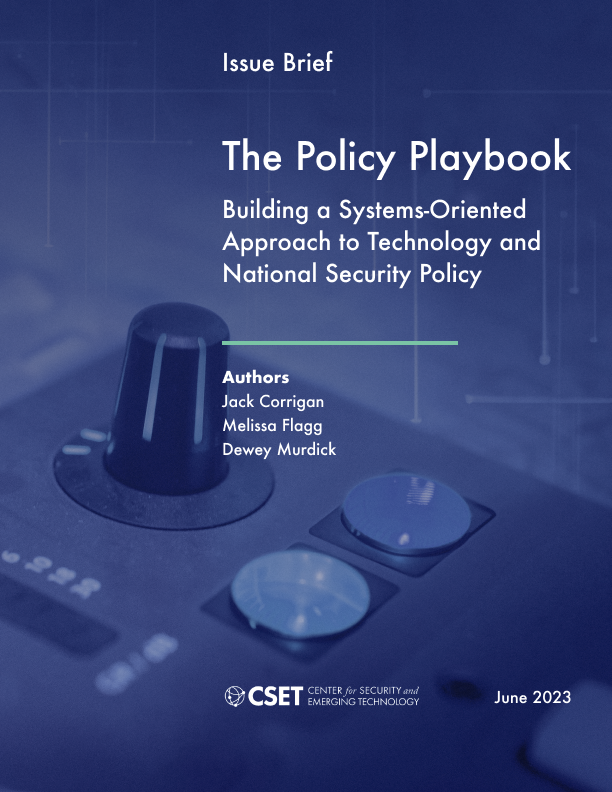Executive Summary
For leaders navigating the complexities of technology, national security, and the economy, the policy landscape can be quite disjointed and difficult to manage. Today’s fragmented approach to policymaking—in which experts focus on narrow sets of issues and policies—can make it difficult to design holistic strategies, which often results in decisions that do not account for the complexity of the problems at hand. The government has a wide variety of policy levers at its disposal through which it can achieve its strategic goals. Understanding the interactions and tensions between these levers is critical to crafting an effective approach to emerging technology and national security.
This brief aims to provide a framework for a more systems-oriented technology and national security strategy. We begin by identifying and discussing the tensions between three strategic technology and national security goals:
- Driving technological innovation.
- Impeding adversaries’ progress.
- Promoting safe, values-driven deployment.
We go on to provide a brief overview of 15 levers of power through which policymakers can pursue these goals. These proposed levers fall into two categories: direct levers of power (there are nine), which are focused on discrete functions and issue sets; and enabling levers of power (there are six), which are more general-purpose and can be used to enhance the effect of the direct levers. These proposed categories are based on our own analysis, and while the list is non-exhaustive, it provides a useful framework for characterizing government actions and aligning them to particular goals of technology policy.
A more holistic, systems-oriented approach to policymaking is crucial for addressing novel challenges and balancing competing technology and national security goals. To craft effective strategies, leaders must understand the array of policy levers at their disposal, recognize the trade-offs, and create feedback mechanisms to monitor the real-time impacts of their policies in a rapidly changing world. This adaptable framework, suitable for any country or international body, emphasizes the importance of creative problem-solving and having a comprehensive understanding of the policy landscape to achieve strategic goals. This framework is intended for decision-makers and stakeholders in the realms of technology, national security, and economic policy.
